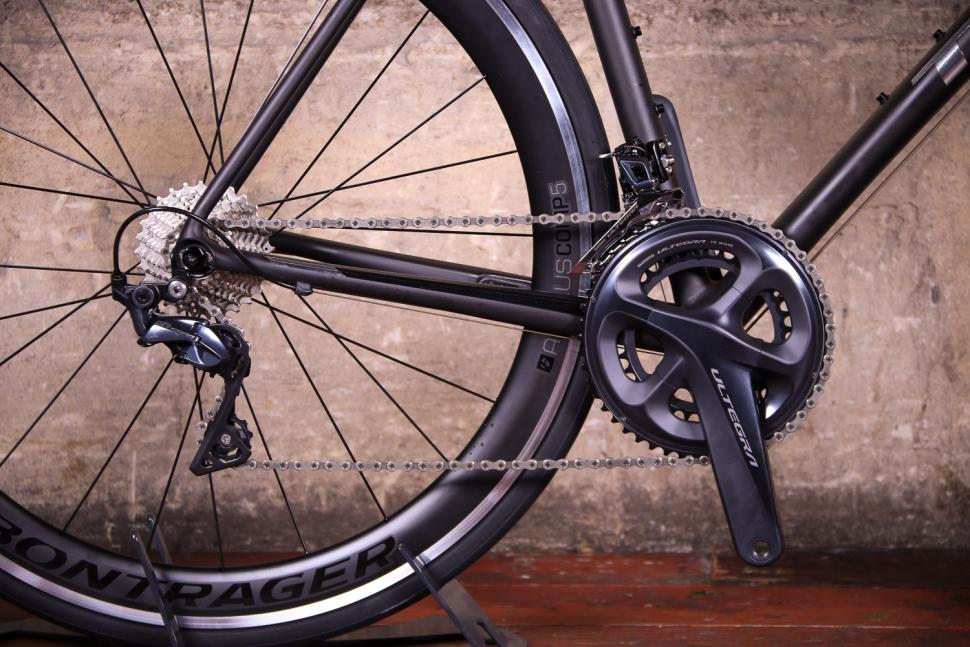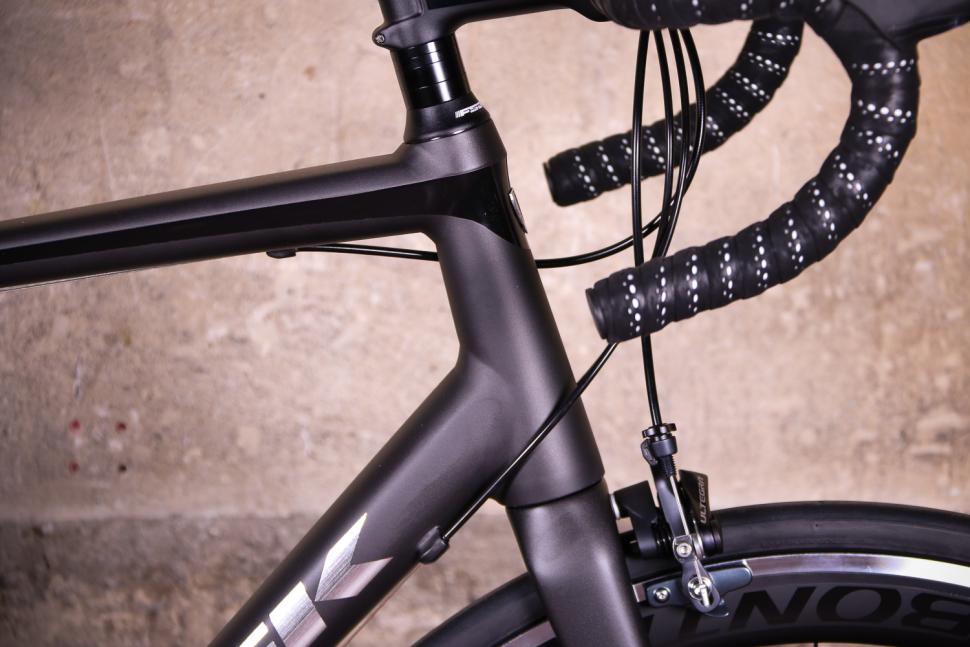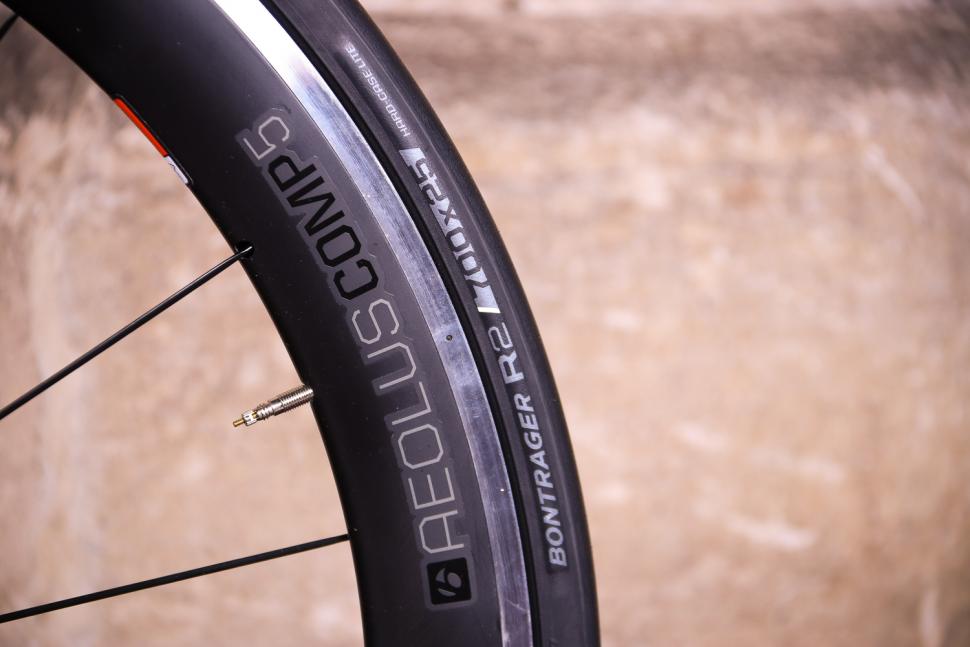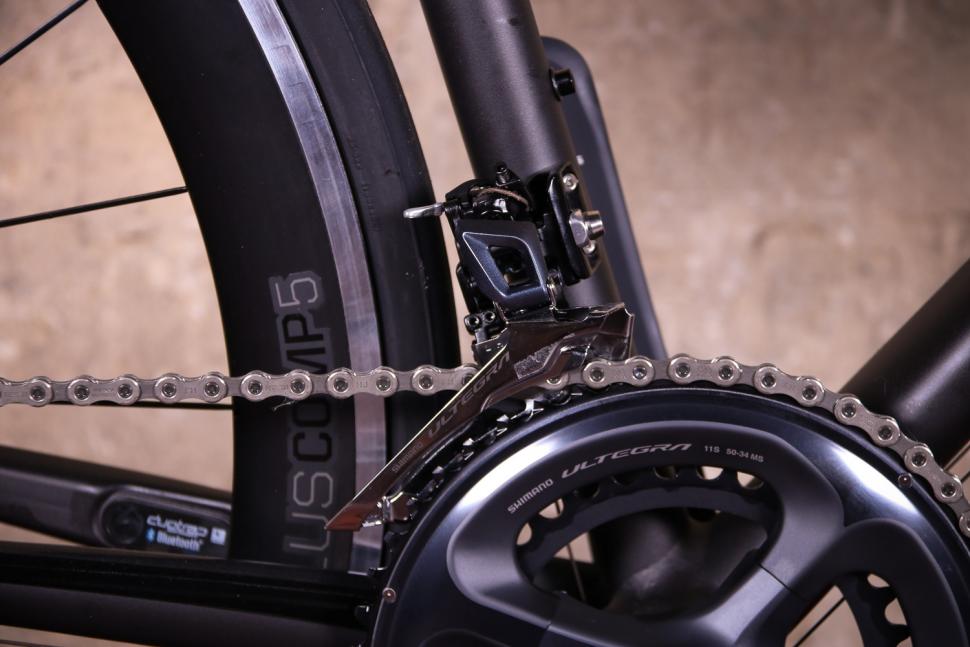- News
- Reviews
- Bikes
- Accessories
- Accessories - misc
- Computer mounts
- Bags
- Bar ends
- Bike bags & cases
- Bottle cages
- Bottles
- Cameras
- Car racks
- Child seats
- Computers
- Glasses
- GPS units
- Helmets
- Lights - front
- Lights - rear
- Lights - sets
- Locks
- Mirrors
- Mudguards
- Racks
- Pumps & CO2 inflators
- Puncture kits
- Reflectives
- Smart watches
- Stands and racks
- Trailers
- Clothing
- Components
- Bar tape & grips
- Bottom brackets
- Brake & gear cables
- Brake & STI levers
- Brake pads & spares
- Brakes
- Cassettes & freewheels
- Chains
- Chainsets & chainrings
- Derailleurs - front
- Derailleurs - rear
- Forks
- Gear levers & shifters
- Groupsets
- Handlebars & extensions
- Headsets
- Hubs
- Inner tubes
- Pedals
- Quick releases & skewers
- Saddles
- Seatposts
- Stems
- Wheels
- Tyres
- Health, fitness and nutrition
- Tools and workshop
- Miscellaneous
- Cross country mountain bikes
- Tubeless valves
- Buyers Guides
- Features
- Forum
- Recommends
- Podcast
review
£2,000.00
VERDICT:
Quick and lively aluminium road bike with a good ride quality and excellent Shimano Ultegra components
Weight:
7,890g
Contact:
At road.cc every product is thoroughly tested for as long as it takes to get a proper insight into how well it works. Our reviewers are experienced cyclists that we trust to be objective. While we strive to ensure that opinions expressed are backed up by facts, reviews are by their nature an informed opinion, not a definitive verdict. We don't intentionally try to break anything (except locks) but we do try to look for weak points in any design. The overall score is not just an average of the other scores: it reflects both a product's function and value – with value determined by how a product compares with items of similar spec, quality, and price.
What the road.cc scores meanGood scores are more common than bad, because fortunately good products are more common than bad.
- Exceptional
- Excellent
- Very Good
- Good
- Quite good
- Average
- Not so good
- Poor
- Bad
- Appalling
The Trek Émonda ALR 6 is a lively aluminium road bike with a good ride quality and a high spec for the money.
- Pros: Lively ride, comfortable, very good Shimano Ultegra groupset
- Cons: Some people are going to want carbon no matter what
The Émonda ALR proves that there's still plenty of life left in aluminium, if that was ever in doubt. Many people seem to think that carbon fibre bikes are inherently better than aluminium bikes, but that really isn't the case. Carbon fibre isn't an end in itself, it's a means to an end. It's a material that can be built into lightweight, stiff and sometimes aerodynamically efficient bikes, and aluminium can be made into great bikes too, as the Émonda ALR shows.
> Find your nearest dealer here
Trek's Émonda lineup is interesting this year in that the carbon-framed Émonda SL 4 (£1,400, Shimano Tiagra groupset) and Émonda SL 5 (£1,800, Shimano 105 groupset) are both cheaper than the aluminium-framed Émonda ALR 6 (£2,000, Shimano Ultegra groupset). Essentially, you can choose between an aluminium frame and a higher level groupset, and a carbon frame and a lower level groupset. This is the highest specced aluminium model in the Émonda range.
The Émonda SL 6, with a carbon frame and a Shimano Ultegra groupset, is £2,250.
> Check out our review of the Émonda SL 5 here
The ALR 6 rides really well, providing snappy acceleration through its taut frame. Weighing in at 8.1kg (17.9lb), our review bike is quick off the mark. It's actually Trek's lightest ever aluminium road bike. Sure, there are plenty of lighter bikes out there, but this is a good weight and, equally important, the frame is stiff enough to hold firm when you put the power down.
Trek uses its premium 300 Series Alpha Aluminum for the three aluminium Émondas rather than the 100 Series it uses for the Domane AL models or the 200 Series it uses for the Domane ALR , and this higher grade material is hydroformed (high pressure fluid is used to shape the metal) into size-specific tubes. In other words, the tubes are made differently so that each size of frame performs the same.
Although it houses a standard 24mm (rather than an oversized 30mm) axle, the 86.5mm wide bottom bracket holds everything firmly through the centre of the bike, providing a solid platform from which you can lay down your power.
Well equipped
The Émonda ALR 6 has good climbing skills, transferring your effort efficiently into forward movement. The decent weight helps here, as does the fact that it's equipped with a new Shimano Ultegra 8000 groupset (we'll be reviewing it separately) that includes a compact chainset (with 50-tooth and 34-tooth chainrings) and an 11-28-tooth cassette.
This provides you with lower gear ratios than you get with a standard chainset, so getting up steep hills becomes easier – and even the pros sometimes use compacts for the big mountains. You might yearn for a larger inner sprocket, I guess. If so, the short cage version of the Shimano Ultegra R8000 rear derailleur will take a maximum 30-tooth.
The compact chainset does mean you have to do without the biggest gears you get with a standard chainset, so you'll spin out sooner on fast descents. That said, you're still likely to be able to pedal at over 35mph with the setup you get here (100rpm gets you 35.7mph, 120rpm gets you 42.8mph).
Speaking of descending, the Émonda ALR 6 provides you with plenty of assurance on the way down. The E2 tapered head tube, with a 1 1/2in lower bearing, provides a high level of stiffness at the front end, and that becomes more noticeable the harder you slam the bike into corners. Rather than wavering about, it takes you exactly where you want to go and that gives you the confidence to keep pushing the speed up.
When required, the Shimano Ultegra brakes bite the Émonda's alloy rims hard to provide strong and predictable power whether you just need to shave off a bit of speed or come to a complete standstill. With all that muscle at my disposal, I felt I could rag it down sketchy descents without things feeling at all hazardous.
Comfortable ride
The aluminium Émondas are built to what Trek calls its H2 geometry. Essentially, this is a performance-orientated geometry but it's a little more relaxed than a Trek H1 setup; the head tube is a little taller and the top tube is a little shorter, giving you a slightly more upright riding position. The idea, of course, is to provide more comfort and confidence.
We have the 58cm model here on test and it comes with a 19cm head tube. That's fairly lofty for a race bike but it's not up there with that of some endurance road bikes – not even close. With a stack height of 596mm and a reach of 391mm, the Émonda ALR 6 still has half an eye on an efficient aero position.
Trek has specced a compact handlebar so your riding position isn't too extreme when you rest your hands down on the drops. The Bontrager Race VR-C has a drop (the vertical distance from the centre of the bar at the stem clamp point to the centre of the bar at the ends) of 125mm so when you make the switch from the hoods you certainly feel like you're moving into an 'attack' position, but it's not crazy-deep.
Aluminium bikes are often characterised as harsh but that's largely unfair, the Émonda ALR 6 providing at least an average amount of give. It's certainly a long, long way from jangling. The skinny seatstays doubtless contribute to that, as does the lengthy amount of carbon fibre seatpost that you're almost certain to have extending out of the frame thanks to the sloping top tube. That seatpost is a slim 27.2mm in diameter and it flexes enough to help polish over bumps and dents in the road surface.
Bontrager's Montrose Comp cutout saddle has loads of flex in its shell along with quite deep cushioning – a little too deep for my taste, if truth be told, but we're all different. If you feel the need for more comfort you could simply swap the 25mm Bontrager R2 Hard-Case Lite tyres for something in a 28mm width. The frame and fork have enough clearance and so do the Shimano Ultegra R8000 dual-pivot brakes, so there's nothing stopping you. The other option would be to run tubeless tyres (the ones fitted aren't tubeless compatible) at lower pressures on the Bontrager Aeolus Comp 5 Tubeless Ready wheels.
The rims of those wheels are aluminium, a carbon fairing on the spoke-side taking the total depth to 50mm without the addition of a whole lot of weight. The idea, of course, it to improve the aero efficiency. One drawback to this design is that you can't get to the spoke nipples externally; they're hidden away inside the fairing. This means you need to take off the tyre, inner tube (if you're using one) and rim tape for adjustments if the wheel goes out of true. That's a pain, especially if you're using a tubeless system with sealant in there. That said, both wheels have run straight and true throughout testing so it's a non-issue so far.
The rest of the spec is very impressive, particularly the new Shimano Ultegra 8000 groupset – and that's a full groupset right down to the chain, rather than a mix of eye-catching components and downgrades.
> Check out the Shimano Ultegra 8000 groupset here
You probably already know that Ultegra is Shimano's second tier road groupset, and we have only good things to say about it. The bottom line is that Ultegra provides great shifting and braking to keep you fully in control. It's excellent stuff! As mentioned above, we'll run a full review on it separately.
The obvious difficulty the Émonda ALR 6 has is that at £2,000 it's up against a lot of carbon bikes, and there's definitely a perception that carbon is simply better than aluminium... and that's not necessarily the case. Yes, carbon has some big advantages when it comes to making stiff and lightweight bikes, but it's not the be-all and end-all. Certainly don't write off a bike because it's not carbon, that's madness.
> Buyer's Guide: 13 of the best aluminium road bikes
Which would I choose if I were buying, the £2,000 Émonda ALR 6 or the £1,800 SL 5? Well, that depends. I'd personally prefer the direct mount brakes and internal cable routing you get with the SL 5, but if you're not bothered by those things you get more for your money with the ALR 6.
Shimano 105 makes up the biggest share of groupsets on £2,000 road bikes, so the Ultegra specced on the Émonda ALR 6 is a bonus. There are plenty of exceptions, though. Giant's TCR Advanced 1, for example, with a carbon composite frame and a Shimano Ultegra groupset, is only £1,799, and Merida's Scultura 5000, priced £2,000, has a carbon frame and fork and an Ultegra groupset. This means the Émonda ALR 6 is up against some stiff opposition on value. I'd say it offers a very good deal, but it's not out on its own.
Overall, the Émonda ALR 6 is a very strong offering. Do yourself a favour and take aluminium seriously. This is a quick and taut bike that provides plenty of comfort, and the Shimano Ultegra components are superb.
Verdict
Quick and lively aluminium road bike with a good ride quality and excellent Shimano Ultegra components
road.cc test report
Make and model: Trek Émonda ALR 6
Size tested: 58cm
About the bike
State the frame and fork material and method of construction. List the components used to build up the bike.
Frame Ultralight 300 Series Alpha Aluminium, Invisible Weld Technology, E2 tapered head tube, DuoTrap S compatible, BB86.5
Fork Émonda carbon, carbon E2 steerer
Wheels Bontrager Aeolus Comp 5 Tubeless Ready
Tyres Bontrager R2 Hard-Case Lite, 700x25c
Shifters Shimano Ultegra, 11-speed
Front derailleur Shimano Ultegra, braze-on
Rear derailleur Shimano Ultegra
Crank Shimano Ultegra, 50/34 (compact)
Bottom bracket Press Fit BB86.5
Cassette Shimano Ultegra, 11-28, 11-speed
Chain Shimano Ultegra
Saddle Bontrager Montrose Comp, chromoly rails
Seatpost Bontrager carbon, 2-bolt head, 27.2 mm, 8 mm offset
Handlebar Bontrager Race VR-C, 31.8 mm
Handlebar tape Bontrager
Stem Bontrager Pro, 31.8 mm, 7-degree, w/computer and light mounts
Headset Integrated, cartridge bearing, sealed, 1-1/8in upper, 1.5in lower
Brakeset Shimano Ultegra
Tell us what the bike is for, and who it's aimed at. What do the manufacturers say about it? How does that compare to your own feelings about the bike?
Trek says, "Émonda ALR 6 is the highest-end aluminium road bike in the Émonda line-up. It's light, fast, responsive and engineered to hold its own in every way against far more expensive carbon models. A performance Shimano Ultegra drivetrain, aero wheels and lightweight aluminium frame make it an ideal choice for crit racers, club riders, climbers and anyone who wants the fastest aluminium road bike that we make."
It lists these attributes:
• This is a top-of-the-line aluminium racing bike that lives for speed.
• Like every Émonda, it's built to be the lightest and fastest in its class and backed by our lifetime warranty.
• No one likes ugly welds: Invisible Weld Technology for seamless looks and lighter weight.
• It shares the geometry of our highest-end carbon Émonda racing bikes, and it gives you a ride quality that stands up in every way to far more expensive carbon bikes.
Frame and fork
Overall rating for frame and fork
8/10
Tell us about the build quality and finish of the frame and fork?
The build quality is very high.
The smooth welds and very good finish mean that you can barely see the joints between the tubes.
Treks says it has used Invisible Weld Technology here. What's that?
"Revolutionary welding technology creates a better connection with each tube junction, increasing strength while using less material," says Trek.
Well, they certainly look neat! If you want to see the welds you have to look closely. Really closely!
Unlike on the carbon Émondas, the cabling is fully external.
The frame is compatible with a DuoTrap S sensor. This is a Bluetooth/ANT+ sensor that sits in a hollow on the non-driveside chainstay to measure speed, distance and cadence on a bike computer or smartphone.
Tell us about the materials used in the frame and fork?
Trek says that the 300 Series Alpha Aluminum is an upgrade over its 200 Series. It is hydroformed into size-specific tubes.
The fork legs and steerer are carbon..
Tell us about the geometry of the frame and fork?
The Émonda ALR 6 is built to Trek's H2 fit, as is the ALR 5.
H2 is slightly more relaxed than Trek's H1 fit but it is still a race-orientated geometry.
How was the bike in terms of height and reach? How did it compare to other bikes of the same stated size?
We had the 58cm model with a 573mm effective top tube, a 553mm seat tube and a 190mm head tube. The stack height (vertical distance from the centre of the bottom bracket to the top of the top tube) is 596mm and the reach (the horizontal distance between those two points) is 391mm.
It puts you into a fairly aggressive riding position, but it's not as full-on as Trek's H1 fit.
Riding the bike
Was the bike comfortable to ride? Tell us how you felt about the ride quality.
Yes, it is a comfortable bike. Don't believe all that stuff about aluminium being harsh.
Did the bike feel stiff in the right places? Did any part of the bike feel too stiff or too flexible?
Yes, it's stiff through the bottom bracket and the head tube. There was less steerer tube flex when I moved the stem right down.
How did the bike transfer power? Did it feel efficient?
Yes, it's stiff through the bottom bracket.
Was there any toe-clip overlap with the front wheel? If so, was it a problem?
A little but I don't find it a problem.
How would you describe the steering? Was it lively, neutral or unresponsive? The lively side of neutral
Which components had the most effect (good or bad) on the bike's comfort? would you recommend any changes?
I always have loads of seatpost extending out of the frame, and that certainly helps with comfort, especially if it's a slim 27.2mm diameter post like the one here.
Which components had the most effect (good or bad) on the bike's efficiency? would you recommend any changes?
Everything feels pretty efficient to me.
Rate the bike for efficiency of power transfer:
8/10
Rate the bike for acceleration:
7/10
Rate the bike for sprinting:
8/10
Rate the bike for high speed stability:
8/10
Rate the bike for cruising speed stability:
8/10
Rate the bike for low speed stability:
8/10
Rate the bike for flat cornering:
8/10
Rate the bike for cornering on descents:
8/10
Rate the bike for climbing:
8/10
The drivetrain
Rate the drivetrain for performance:
9/10
Rate the drivetrain for durability:
8/10
Rate the drivetrain for weight:
8/10
Rate the drivetrain for value:
8/10
Wheels and tyres
Rate the wheels and tyres for performance:
7/10
Rate the wheels and tyres for durability:
8/10
Rate the wheels and tyres for weight:
7/10
Rate the wheels and tyres for comfort:
8/10
Rate the wheels and tyres for value:
7/10
Tell us some more about the wheels and tyres.Did they work well in the conditions you encountered? Would you change the wheels or tyres? If so, what for?
The wheels are decent enough, but they're not stunning.
Controls
Rate the controls for performance:
9/10
Rate the controls for durability:
8/10
Rate the controls for weight:
8/10
Rate the controls for comfort:
8/10
Rate the controls for value:
8/10
Your summary
Did you enjoy riding the bike? Yes
Would you consider buying the bike? Yes, for a bike at this price it would be on the shortlist.
Would you recommend the bike to a friend? Yes
Rate the bike overall for performance:
8/10
Rate the bike overall for value:
8/10
Use this box to explain your score
Some people will doubtless be put off by the fact that this bike is aluminium and they could get a carbon-framed bike for this kind of money. My argument would be that a carbon bike isn't always better than an aluminium bike. You get a bike that performs very well here, complete with an extremely good groupset. It's definitely one to consider if you're in the market for a performance-minded bike at this price.
About the tester
Age: 47 Height: 190cm Weight: 75kg
I've been riding for: Over 20 years I ride: Most days I would class myself as: Expert
I regularly do the following types of riding: commuting, club rides, sportives, general fitness riding
Mat has been in cycling media since 1996, on titles including BikeRadar, Total Bike, Total Mountain Bike, What Mountain Bike and Mountain Biking UK, and he has been editor of 220 Triathlon and Cycling Plus. Mat has been road.cc technical editor for over a decade, testing bikes, fettling the latest kit, and trying out the most up-to-the-minute clothing. He has won his category in Ironman UK 70.3 and finished on the podium in both marathons he has run. Mat is a Cambridge graduate who did a post-grad in magazine journalism, and he is a winner of the Cycling Media Award for Specialist Online Writer. Now over 50, he's riding road and gravel bikes most days for fun and fitness rather than training for competitions.






















































Or even better: make driving licences weight-restricted. AIUI you have to take a different test to be able to drive a minibus or a LGV or a HGV....
I think buying anything off Covert Instruments would equate to going equipped over here.
Cromwell Road parking 'nightmare' next to Dorchester South...
I tried, but I just cannot in earnest believe that this question is sincere.
Ah, British Cycling and the UCI. It's hard to think of two more universally beloved organisations. Thames Water and the National Rifle Association...
Car hits stone wall and overturns in smash outside Wiltshire pub...
We get these 'high action rate' claims all the time, with little or no evidence of what the action was. People are, of course, entitled to consider...
Thank you. Can't say I've ever seen one but I will keep a lookout in future.
Part of me hopes they don't waste the money. If past performance is any guide poor resurfacing (particularly around utility access points), "works...
I have Cors N:ext on my summer bike, mainly because they do a 24mm, 25 is REALLY tight on rear brake clearance. I am not impressed with how the...